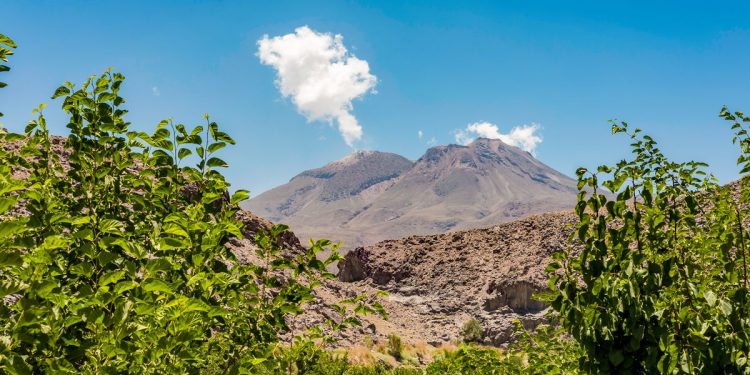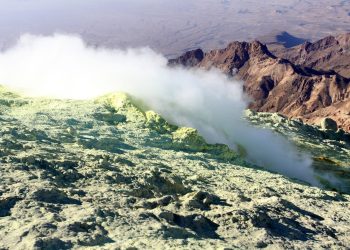After millions of years of peace, an inactive volcano shows the first signs of volcanic unrest. The summit of Taftan has become swollen and bloated, indicating that the pressure of magma and hot gases is increasing in its bowels.
The rest of this article is behind a paywall. Please log in or subscribe to access the full content.
Taftan Volcano is a 3,940 meter (12,927 ft) stratovolcano located in southeastern Iran. It is considered the only active member of the Makran Continental Volcanic Arc, a trio of volcanoes on the Iran-Pakistan border, created by one of Earth’s tectonic plates, the Arabian Plate, slowly sliding beneath another, the Eurasian Plate.
Although slightly active, it is not known for its aggressive behavior. There were reports of it letting out smoke in 1902, as well as unverified claims of a small lava flow in 1993, but it is not known to have erupted in human history. Scientists had previously estimated that the last major eruption occurred around 700,000 years ago, well before Homo sapiens had evolved.
However, this giant may not be as gentle as once hoped. In a new study, volcanologists used satellite data to show that the summit of the Taftan volcano swelled by about 9 centimeters (3.5 inches) between July 2023 and May 2024. The bloating has not yet subsided.
Oddly, the bulge appears to be “spontaneous” and “trigger-free,” the study authors note. Volcanic activity can be triggered by a variety of factors, from earthquakes that shake the plumbing system to changes in groundwater. Even a period of intense rain can shake things up.
But in Taftan’s case, there is no obvious culprit. This led researchers to speculate that the bloating could be caused by magma being pushed upward due to a pocket of hot water and steam deep underground.
“We postulate that changes in gas permeability in the shallow part of the volcanic edifice and/or undetected deep magmatic intrusions could have led to the observed pressure buildup in a volume of the hydrothermal system located between 460 and 630 meters (1,509 to 2,067 feet) below the surface,” the study authors write.
This does not suggest that an explosive eruption is expected any day now. It does, however, show that Taftan is not the sleeping “zombie” many thought he was. If so, volcanologists and authorities will need to remain on alert, strengthen monitoring systems and prepare for the day when Taftan actually wakes up.
“Our results reveal that Taftan is more active than previously thought,” the study authors conclude.
“This highlights the urgent need for a review of the current volcanic risk of the Makran subduction volcanic arc, i.e. establishing volcano monitoring networks, creating and/or updating geological hazard maps and other measures to reduce volcanic risks,” they added.
The study is published in the journal Geophysical Research Letters.









